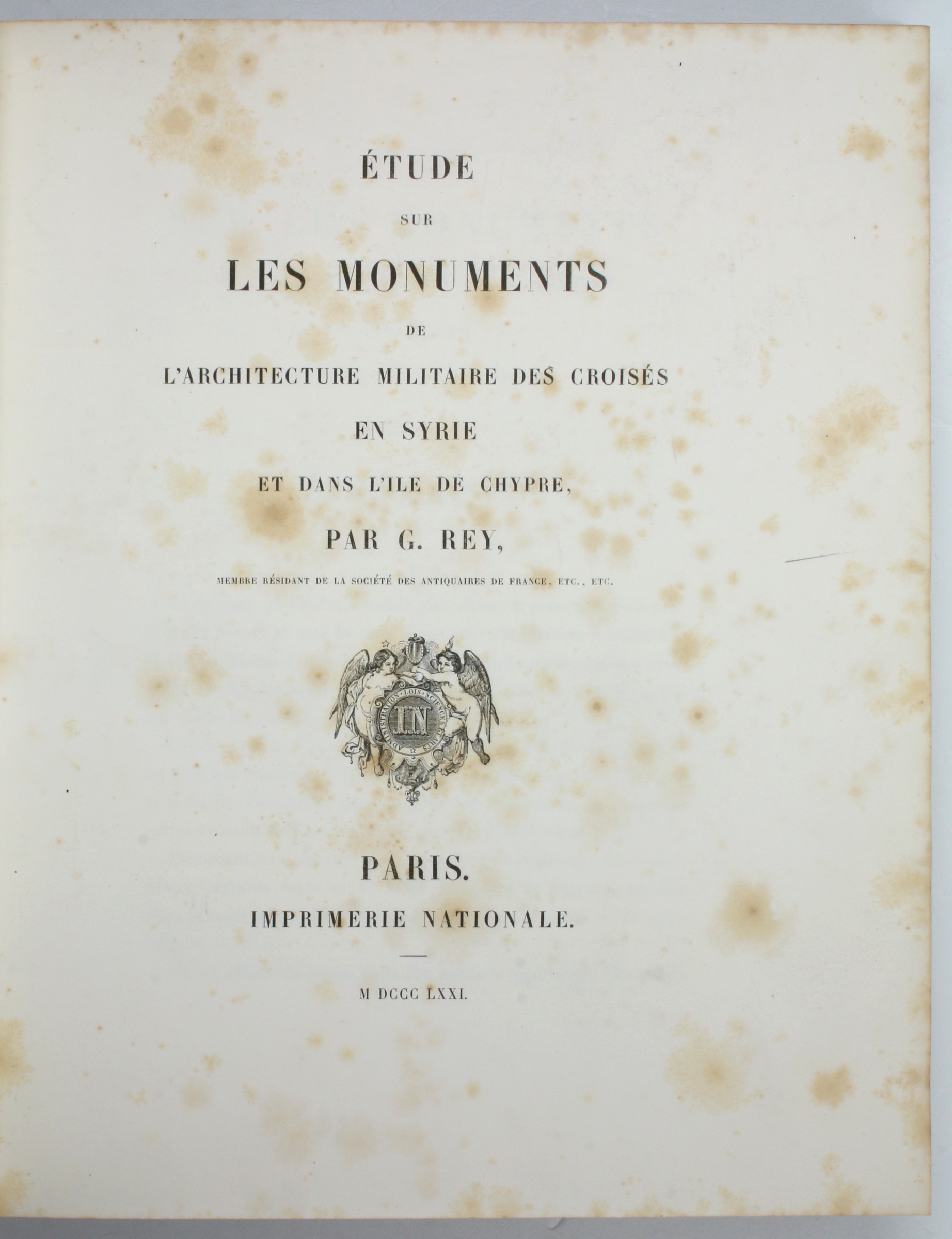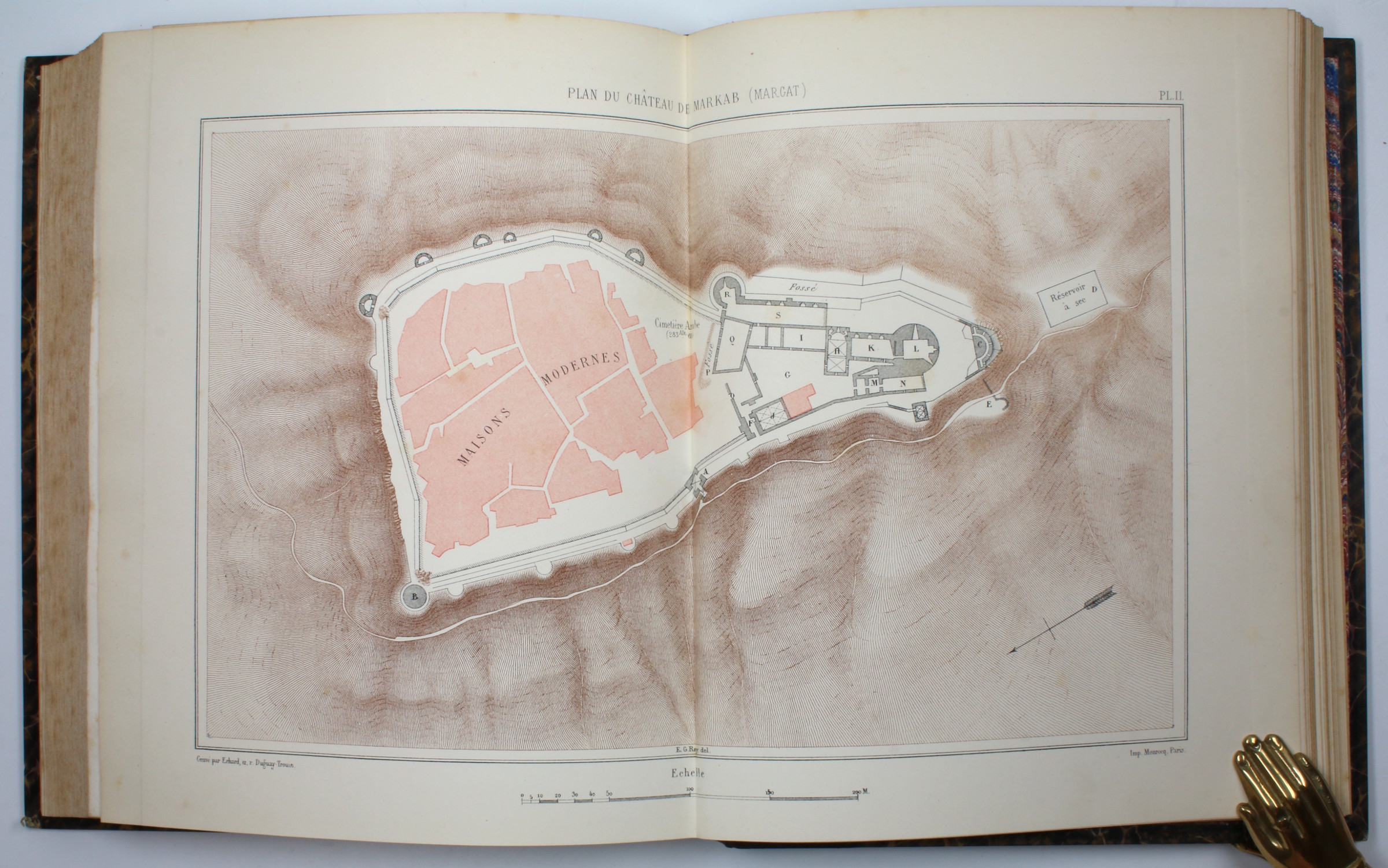Early archeology of Crusader castles
Étude sur les monuments de l'architecture militaire des croisés en Syrie et dans l'île de Chypre.
Large 4to (230 x 278 mm). (4), 272 pp. With 24 plates, including 1 folding map and numerous two-page plates, most in colour. Half brown morocco and marbled boards.
€ 3.500,00
First edition of this thoroughly illustrated history of Crusader castles, fortifications, and military architecture in what is now Syria, Israel, Jordan, and Cyprus. Its author, Alban Emmanuel Guillaume Rey (1837-1916), was a French archaeologist and orientalist, and one of the earliest archaeologists to study particularly the era of the Crusades in the Middle East. He was also a military man and a baron, able to fund his own research, and purchased a French castle of his own, the Château de Lauresse, though it is rather more 17th century and palatial than the Syrian counterparts of interest to Rey.
The twenty-four plates following the text provide diagrams, maps, views, and cross-sections of the most important Crusader castles, including but not limited to the Margat, also known as Marqab, one of the major strongholds of the Knights Hospitaller and from whence Rey evidently collected several antiquities to bring back to France; several striking views and diagrams of Krak des Chevaliers (Hisn al-Akrad), perhaps the most important of the Crusader castles; Chastel Blanc (Burj Safita), built by the Knights Templar; Château Pèlerin (Atlit), today in Israel and also built by the Knights Templar during the Fifth Crusade; Sahyun Castle, built by crusading Franks and besieged by Saladin; Beaufort or Belfort Castle, known locally as Qal'at al-Shaqif; Kerak Castle (Qal'at al-Karak) in modern Jordan, one of the largest castles in the Levant; Montfort (Qal'at al-Qurain), the principal stronghold in the Holy Land of the Teutonic Order; and Sidon's Sea Castle (Kalaat Saida al-Bahriya), built on an island just off the coast which was formerly the site of a temple to Melqart, the Phoenician version of Heracles. In all cases, special attention is paid not only to the historical value and dramatic views of the castles, but also to the basics of castle and city fortifications via walls, ditches, and other methods.
Touch of exterior wear, some foxing; plates bright and clean. A fantastic early foray into Crusade archaeology.
OCLC 468591232.














